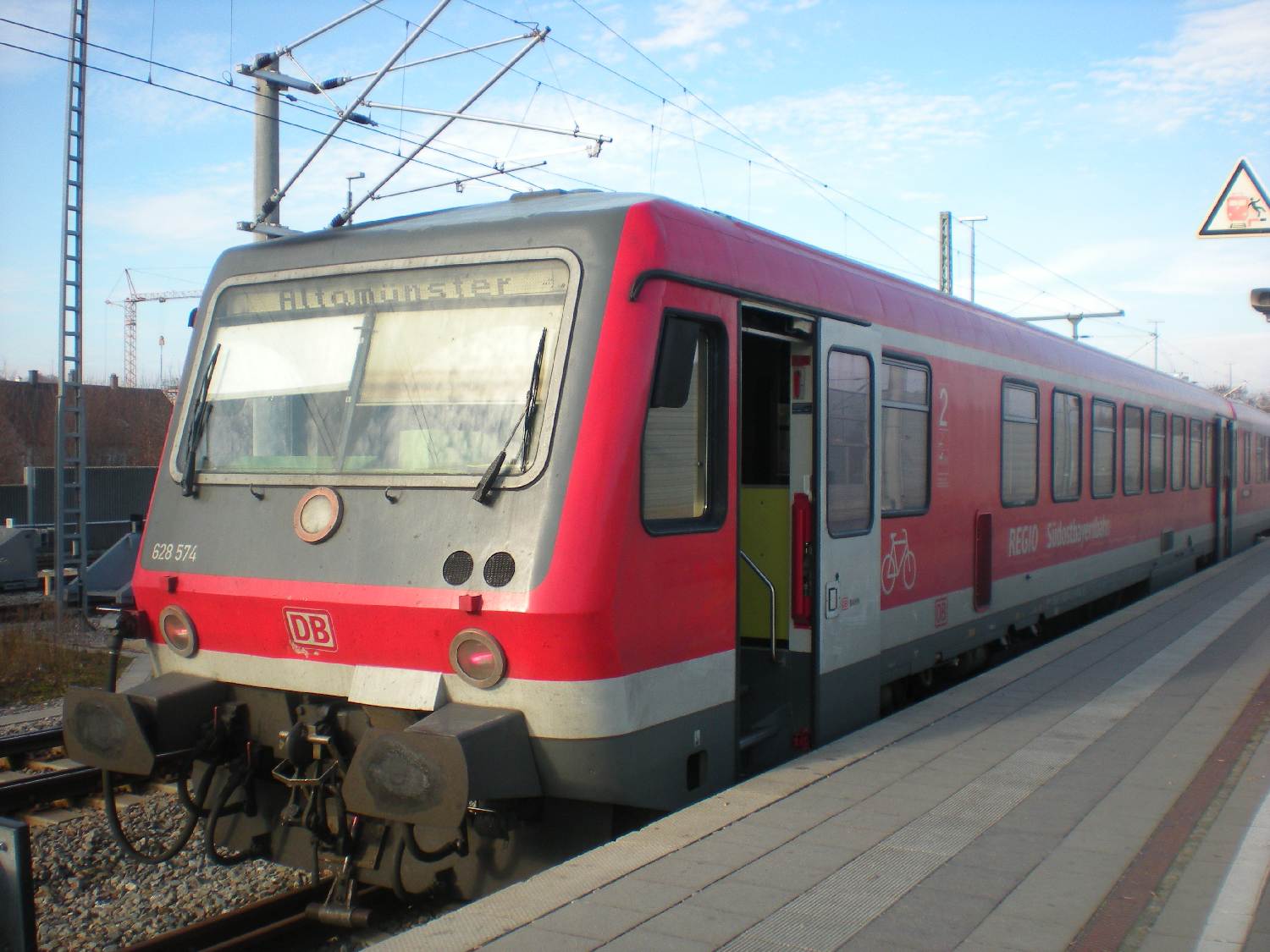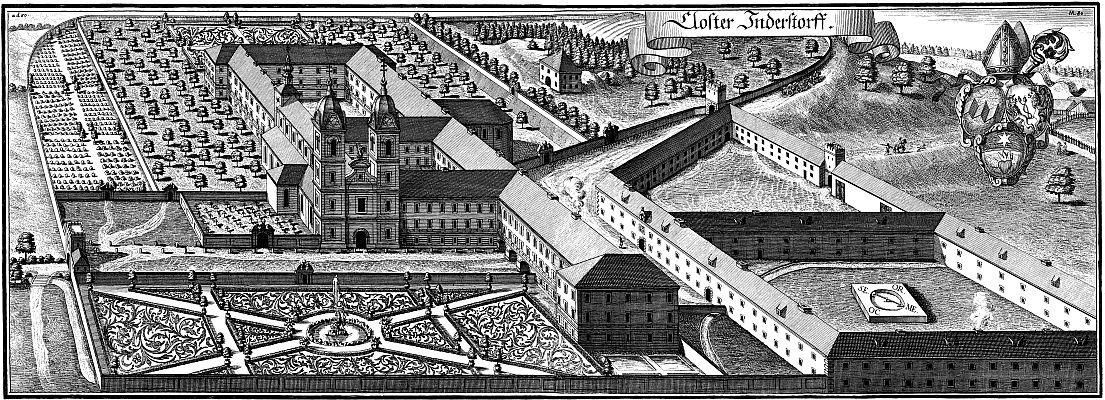|
Dachau–Altomünster Railway
The Dachau–Altomünster railway, also called the Bummerl, Bockerl or Ludwig Thoma Railway, is a railway in the German state of Bavaria. It is part of the Munich S-Bahn network and is integrated within the Münchner Verkehrs- und Tarifverbund (Munich Transport and Tariff Association, MVV) as line S2. The branch line connects the town of Dachau on the Nuremberg–Munich high-speed railway with Altomünster. Markt Indersdorf is an important stop. Until its electrification in 2014, it was the only non-electrified line of the Munich S-Bahn and was designated as ''line A''. History At the beginning of the year 1900 it was decided to build a railway line from the Munich–Ingolstadt line (now part of the Nuremberg–Munich high-speed line) for the development of the hinterland of Dachau. There were two option for the route: connecting Altomünster via Schwabhausen and Erdweg from Dachau station or connecting Markt Indersdorf from Hebertshausen. The respective municipalities could n ... [...More Info...] [...Related Items...] OR: [Wikipedia] [Google] [Baidu] |
15 KV AC Railway Electrification
Railway electrification systems using at are used on transport railways in Germany, Austria, Switzerland, Sweden, and Norway. The high voltage enables high power transmission with the lower frequency reducing the losses of the traction motors that were available at the beginning of the 20th century. Railway electrification in late 20th century tends to use AC systems which has become the preferred standard for new railway electrifications but extensions of the existing networks are not completely unlikely. In particular, the Gotthard Base Tunnel (opened on 1 June 2016) still uses 15 kV, 16.7 Hz electrification. Due to high conversion costs, it is unlikely that existing systems will be converted to despite the fact that this would reduce the weight of the on-board step-down transformers to one third that of the present devices. History The first electrified railways used series-wound DC motors, first at 600 V and then 1,500 V. Areas with 3 kV ... [...More Info...] [...Related Items...] OR: [Wikipedia] [Google] [Baidu] |
Münchner Verkehrs- Und Tarifverbund
The (MVV; Munich Transport and Tariff Association) is the transit authority of the city of Munich, the capital of the German state of Bavaria. Its jurisdiction covers the city and its surrounding area, responsible for the Munich S-Bahn commuter trains, the Munich U-Bahn, the Munich tramway and buses. The MVV coordinates transport and fares in area comprising the city of Munich and eight surrounding districts. It is jointly owned by the state of Bavaria, the city of Munich and the eight surrounding districts, which are: * Landkreis Bad Tölz-Wolfratshausen * Landkreis Dachau * Landkreis Ebersberg * Landkreis Erding * Landkreis Freising * Landkreis Fürstenfeldbruck * Landkreis München * Landkreis Starnberg Transport services are provided by over 40 companies. These include the Bayerische Oberlandbahn, the Deutsche Bahn that also operates the S-Bahn, the Münchner Verkehrsgesellschaft The ''Münchner Verkehrsgesellschaft'' (MVG; Munich Transport Company) is a municipall ... [...More Info...] [...Related Items...] OR: [Wikipedia] [Google] [Baidu] |
Silberling
Silberling is the colloquial name for the n-coaches of the Deutsche Bundesbahn, a type of regional Passenger car (rail), passenger coach of which more than 5,000 units were built from 1958 to 1981. Nearly all of the coaches have undergone extensive modernisation – these modernised units are widely known as ''Mintling'', ''Grünling'' ("greenling") or ''Rotling'' ("redling") after their exterior colours. The term ''Buntling'' ("colourfulling") is used to denote refurbished Silberling coaches in general. Origin of the name The term ''Silberling'' derives from the coaches' stainless steel body which gave them a unique look during their term of service. Translated it means "silverling" in the English language. Historically, Silberling is a silver coin and widely known from the bible: the thirty pieces of silver (in the Bible translations into German, German Bible: "30 Silberlinge", Gospel of Matthew, Matthew 26,14) Judas Iscariot, Judas obtained for his treason. Technical data ... [...More Info...] [...Related Items...] OR: [Wikipedia] [Google] [Baidu] |
Push–pull Train
Push–pull is a configuration for locomotive-hauled trains, allowing them to be driven from either end of the train, whether having a locomotive at each end or not. A push–pull train has a locomotive at one end of the train, connected via some form of remote control, such as multiple-unit train control, to a vehicle equipped with a control cab at the other end of the train. This second vehicle may be another locomotive, or an unpowered control car. In the UK and some other parts of Europe, the control car is referred to as a ''driving trailer'' (or driving van trailer/DVT where there is no passenger accommodation); in the US and Canada, they are called ''cab cars''. Train formation Locomotive at one end Historically, push–pull trains with steam power provided the driver with basic controls at the cab end along with a bell or other signalling code system to communicate with the fireman located in the engine itself in order to pass commands to adjust controls not ... [...More Info...] [...Related Items...] OR: [Wikipedia] [Google] [Baidu] |
Bavarian Soviet Republic
The Bavarian Soviet Republic, or Munich Soviet Republic (german: Räterepublik Baiern, Münchner Räterepublik),Hollander, Neil (2013) ''Elusive Dove: The Search for Peace During World War I''. McFarland. p.283, note 269. was a short-lived unrecognised socialist state in Bavaria during the German Revolution of 1918–1919.Gaab (2006), p.58 It took the form of a workers' council republic. Its name is also sometimes rendered in English as the Bavarian Council Republic; the German term means a republic of councils or committees: council or committee is also the meaning of the Russian word . It was established in April 1919 after the demise of Kurt Eisner's People's State of Bavaria and sought to establish a socialist soviet republic in Bavaria. It was overthrown less than a month later by elements of the German Army and the paramilitary . Several individuals involved in its overthrow later joined the Nazi Party during its subsequent rise to power. Background The roots of the r ... [...More Info...] [...Related Items...] OR: [Wikipedia] [Google] [Baidu] |
Hebertshausen
Hebertshausen is a municipality in the district of Dachau in Bavaria in Germany Germany,, officially the Federal Republic of Germany, is a country in Central Europe. It is the second most populous country in Europe after Russia, and the most populous member state of the European Union. Germany is situated betwe .... References Dachau (district) {{Dachaudistrict-geo-stub ... [...More Info...] [...Related Items...] OR: [Wikipedia] [Google] [Baidu] |
Dachau Station
Dachau station (german: Dachau Bahnhof) is a station in the Bavarian town of Dachau on the Munich S-Bahn network. It is classified by Deutsche Bahn as a category 3 station and it has five platform tracks. It is served daily by about 190 trains operated by Deutsche Bahn, including 150 S-Bahn trains. Dachau station is on the Nuremberg–Munich high-speed railway and is the beginning of the Dachau–Altomünster railway. Dachau Stadt (town) station is on the Dachau–Altomünster Railway. Location Dachau station is located southeast of the town of Dachau. The station building is located to the west of the tracks and has the address of Bahnhofplatz 1. Frühlingstraße runs to the west of the station, while Langhammerstraße runs west from the Bahnhofplatz (station forecourt). To the east of the tracks is Obere Moosschwaigestraße where there is a park-and-ride area. Schleißheimer Straße passes under the tracks to the north of the station. Augustenfelder Straße runs through an ... [...More Info...] [...Related Items...] OR: [Wikipedia] [Google] [Baidu] |
Erdweg
Erdweg is a municipality in the district of Dachau in Bavaria in Germany Germany,, officially the Federal Republic of Germany, is a country in Central Europe. It is the second most populous country in Europe after Russia, and the most populous member state of the European Union. Germany is situated betwe .... References Dachau (district) {{Dachaudistrict-geo-stub ... [...More Info...] [...Related Items...] OR: [Wikipedia] [Google] [Baidu] |
Bahnhof Schwabhausen Empfangsgebäude
Bahnhof (German for "railway station") is a Swedish Internet service provider (ISP) founded in 1994 by Oscar Swartz in Uppsala, Sweden, and is the country's first independent ISP. Today the company is represented in Stockholm, Gothenburg, Uppsala, Borlänge, Malmö and Umeå. WikiLeaks used to be hosted in a Bahnhof data center inside the ultra-secure bunker Pionen, which is buried inside the White Mountains in Stockholm. History Bahnhof was founded in 1994 by Oscar Swartz. It was one of Sweden's first ISPs. The company is publicly traded since December 2007 under the name BAHN-B (Aktietorget). On 11 September 2008, Bahnhof opened a new computer center inside the former civil defence center Pionen in the White Mountains in Stockholm, Sweden. Controversies On 10 March 2005, the Swedish police confiscated four servers placed in the Bahnhof premises, hoping to find copyrighted material. Although these servers were located near Bahnhof's server park (in a network lab ... [...More Info...] [...Related Items...] OR: [Wikipedia] [Google] [Baidu] |
Dachau Bahnhof Linie A
, , commandant = List of commandants , known for = , location = Upper Bavaria, Southern Germany , built by = Germany , operated by = ''Schutzstaffel'' (SS) , original use = Political prison , construction = , in operation = March 1933 – April 1945 , gas chambers = , prisoner type = Political prisoners, Poles, Romani, Jews, homosexuals, Jehovah's Witnesses, Catholic priests, Communists , inmates = Over 188,000 (estimated) , killed = 41,500 (per Dachau website) , liberated by = U.S. Army , notable inmates = , notable books = , website = Dachau () was the first concentration camp built by Nazi Germany, opening on 22 March 1933. The camp was initially intended to intern Hitler's political opponents which consisted of: communists, social democrats, and other dissidents. It is located on the grounds of an abandoned munitions factory northeast of the medieval town of Dachau, about northwe ... [...More Info...] [...Related Items...] OR: [Wikipedia] [Google] [Baidu] |
Markt Indersdorf
Markt Indersdorf is a municipality in the district of Dachau in Bavaria in Germany. Geography Markt Indersdorf is located on the Glonn River. The Glonn divides the two main towns Markt Indersdorf and Kloster(monastery) Indersdorf. Markt Indersdorf is the largest town in the Dachau hinterland with a central location within the Dachau district. The closest villages are Langenpettenbach, Engelbrechtsmühle, Glonn, Karphofen, Strassbach, and Untermoosmühle. Other villages further out are Ainhofen, Eichstock, Langenpettenbach and Hirtlbach. History The area around Indersdorf has been inhabited by humans for thousands of years. Remains of Celtic/Vindelici structures near Arnzell (between Indersdorf and Altomünster) have been discovered. A Roman road that went from Salzburg to Augsburg passed through a forest south-east of Indersdorf. The road would later be used for oxen/cattle trading in the Middle Ages. The place name "Indersdorf" may refer to the Bavarian name "Undeo" or "Undio" ... [...More Info...] [...Related Items...] OR: [Wikipedia] [Google] [Baidu] |




